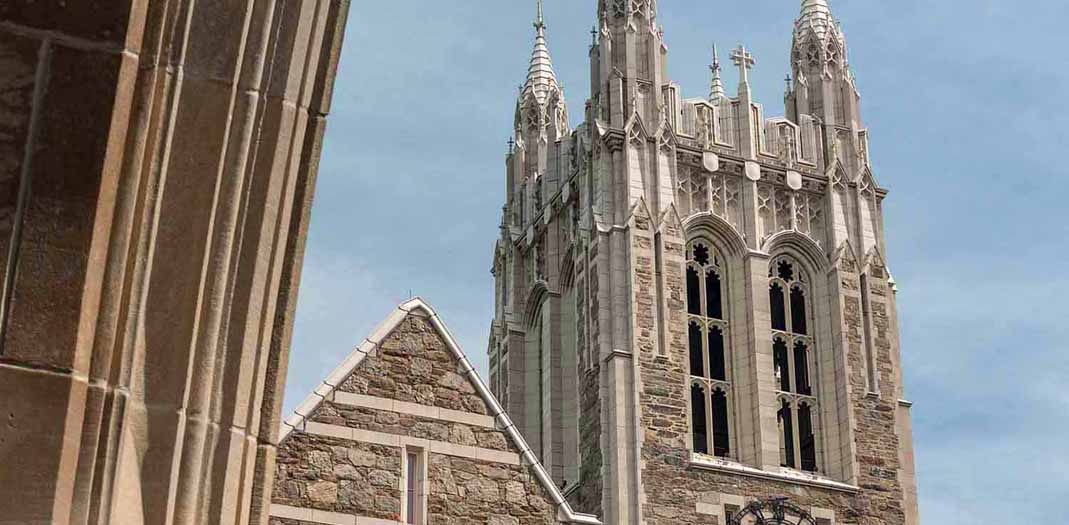The Class of 2024 began its association with Boston College in the shadow of COVID-19. But the pandemic should not be the lens through which to view this year’s group of first-year students, according to University administrators, who say the class demonstrates the academic strength as well as geographical and ethnic diversity that have become hallmarks of BC undergraduate enrollment.
“While this past year has been unprecedented in many ways,” said Director of Undergraduate Admission Grant Gosselin, “we have been able to recruit another outstanding class of students who want the unique educational experience Boston College offers.”
The 2,408 members of the Class of 2024 were selected from 29,382 applicants, an acceptance rate of 26 percent that is in line with classes of recent years, including 2023 (27 percent) and 2022 (28 percent). The average SAT score for the class, 1397, is the second-highest in University history after last year’s (1412), said Gosselin, while the average ACT score, 32, equals that for the Class of 2023. On average, members of the Class of 2024 achieved an unweighted GPA of A/A-, and roughly 80 percent were in the top 10 percent of their high school class.
The current first-year students, 53.7 percent of whom are female and 34 percent AHANA, represent 1,283 high schools: 49 percent are from public schools, 26 percent Catholic/Jesuit, and 25 percent private/ independent schools. Two hundred and 29 members of the Class of 2024 are the first in their family to attend college; 296 are Pell Grant recipients with demonstrated high financial need.
The Class of 2024 comes from 44 states: 31 percent of first-year students are from New England, 31 percent from Mid-Atlantic states, 12 percent from the West, nine percent from the South/Southwest, and eight percent from the Midwest. The top five feeder states are Massachusetts, New York, New Jersey, California, and Connecticut.
Eight percent of first-year students are international students, representing 42 countries—the top five are China, South Korea, Hong Kong, Canada, and the United Arab Emirates.
Sixty-six percent of the class is enrolled in the Morrissey College of Arts and Sciences; 25 percent in the Carroll School of Management; five percent in the Lynch School of Education and Human Development, and four percent in the Connell School of Nursing.
“ When we talk about BC’s high graduation rates, and the success our recent alumni have achieved after graduation, students see that a BC education has long-lasting value. ”
Forty percent of first-year students applied via early decision; the 2020-2021 academic year was the first for which BC offered the option, with the choice of submitting by November 1 or January 1.
“We were very happy with the results from early decision,” said Gosselin. “It seemed to set a tone for the energy that this class has displayed; in conversations with colleagues, we’ve remarked on how incredibly engaged the students were, all the way through the process. It was a real benefit for BC to have that foundation to build on.”
The pandemic forced cancellation of in-person events during the spring, Gosselin said, but Admission, in collaboration with other offices and departments, was able to hold more than 70 virtual information sessions for admitted students considering enrollment at BC.
“The feedback we received from students and their families was very positive,” he said. “People felt the sessions really shined a light on what BC is all about. We were able to showcase the creativity among our faculty, the opportunities for undergraduate research, the emphasis on formation to prepare students for living meaningful lives—something that separates BC from the rest.
“When we talk about BC’s high graduation rates, and the success our recent alumni have achieved after graduation, students see that a BC education has long-lasting value.”
Sean Smith | University Communications | October 2020




